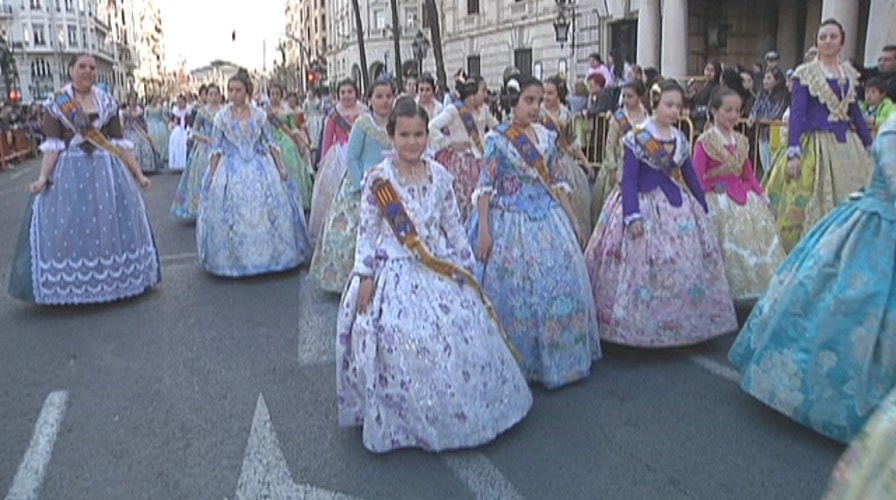Valencia, Spain – Each spring in the city of Valencia, Spain, residents welcome the season with one of the most unique artistic experiences on the planet: the Las Fallas festival.
Las Fallas, or the fires, officially honors St. Joseph, the patron saint of carpenters. It dates back centuries, when carpenters would take their leftover lamp oil from the dark days of winter and burn it in the streets. As they burned the oil, they added unused materials from the year to light up the flames. As time passed, the remnants became more decorative.
Thus, Las Fallas was born.
Today, the Fallas are now the centerpieces of a 20-day celebration. Neighborhoods spend the year building giant paper mache figures filled with fireworks and set them on fire on the last day of the festival, March 19th.
Flames from the burning Fallas shoot up past the height of an eight-story building.
There are more than 300 giant figures all across the city, and visitors from across the world flock to Valencia during this time to witness the fires.
On the streets during the festival, it sounds like a street party in a warzone. There are daily parades, sometimes two at a time that meet at intersections. There is the near constant sound of fire crackers. Every night, there is also a fireworks show and an explosives symphony that attracts thousands to the city square.
All of this is builds to the final night. It is then that this city turns into a place of planned inferno. The gorgeous and celebrated Fallas are torched and burned to the ground. All 300 of them. This represents the shedding of the old and the welcoming of the new.
Away from the sound of explosions and revelry is a peaceful salute to the festival.
The Museo Fallero holds the best pieces, or ninots, from each year’s Las Fallas. The unburned ninots have been preserved since 1934.
The director of the museum, Ximo Palomares compares the burning to listening to beautiful music at a concert.
“It lasts for only a moment. It’s created for that,” he said.
More than 70,000 people a year visit the museum. A walk through the halls gives you a sense of the history politics of each year. Valencians express their feelings on social issues and politics through the Fallas, each humorous in its own way.
The museum also gives visitors a sense of how the techniques and materials have evolved over the years. In the early days, the faces and hands of the little effigies contained wax and used real clothing and carpentry materials. Nowadays, they look almost like cartoons being dared to come to life.
“It’s really very important because it’s a celebration that only takes place here, so it’s a sign of identity and something I think is very related with culture, with the popular culture,” Palomares said.
While much has changed in the makeup of the Falla, 90 percent is still wood and paper.
Valencians acknowledge not everyone understands how they can burn something so grand every year. Palomares said it’s a different way of thinking.
“Don’t worry too much about what you lose and go on,” she said.
Follow us on twitter.com/foxnewslatino
Like us at facebook.com/foxnewslatino

